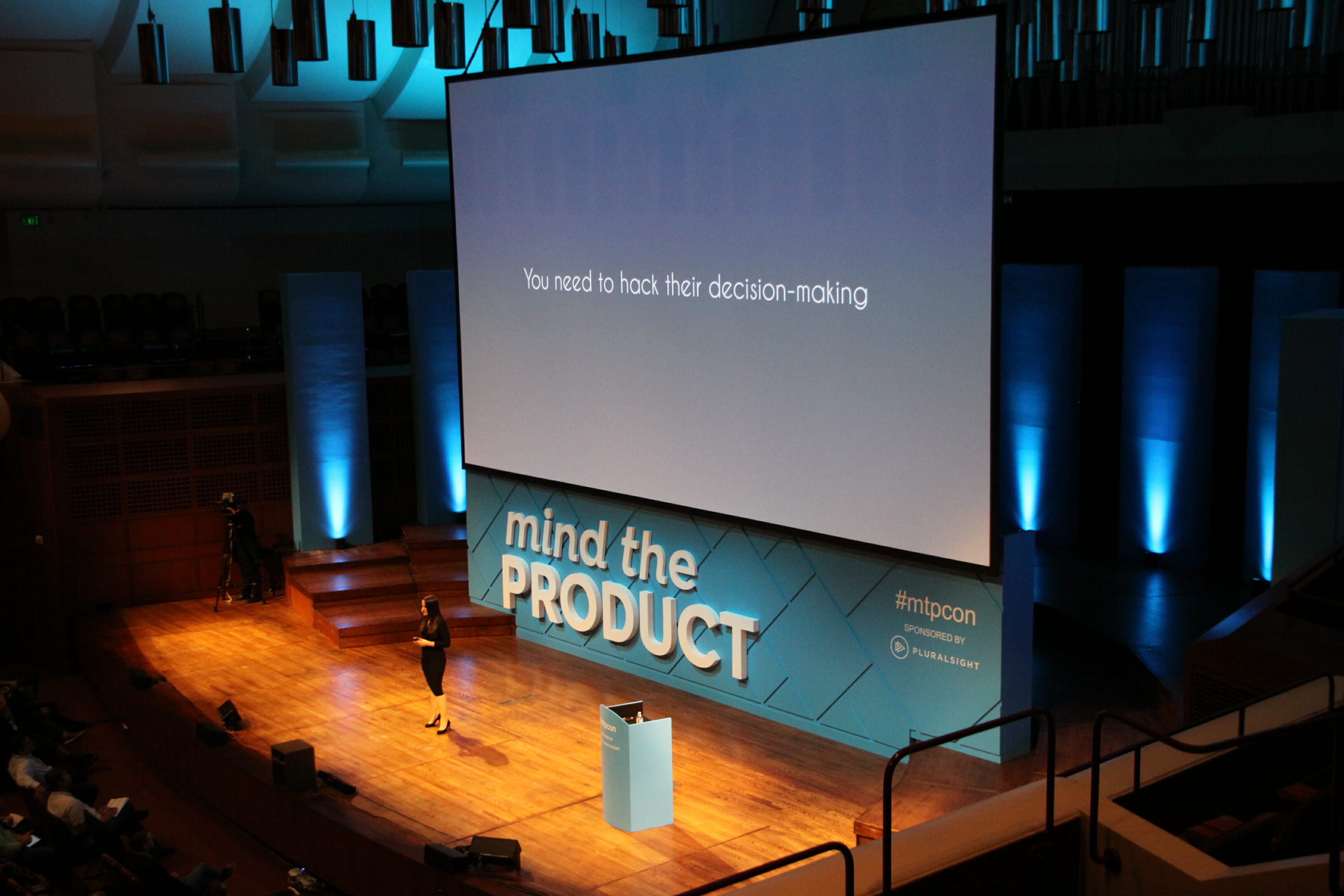In this talk from Mind The Product San Francisco, Nathalie Nahai explains the psychological principles behind the successful conversion, adoption and monetization of products, and how you can use these techniques in a nice vs naughty way.
Nathalie is the Web Psychologist and best-selling author of Webs Of Influence: The Psychology Of Online Persuasion. Having coined the term “web psychology” in 2011 as “the empirical study of how our online environments influence our attitudes and behaviours”, she gives talks and masterclasses on the subject around the world for clients including eBay, Pfizer, Moz, Lund University, Harvard Business Review, Unilever and Google. As well as appearing on national TV and radio, Nathalie has written for national publications and is a resident columnist at Marketing Week and the host of the Guardian’s Tech Weekly podcast.
Conversion
For the purposes of this talk, Nathalie looks at conversion as clicking on a link, watching a video, leaving a comment, signing up to a newsletter or signing up for a trial. Inevitably to achieve conversion you have to hack users’ decision making using one of three core psychological principles:
1. Induce a positive emotional state – where conscious thought conflicts with emotion, our neural circuitry is designed to always prioritise emotion. This is why so many ads use humor or emotion to tug at your heart strings, only showing the product once you’re feeling good – to convince your heart to decide, not your head.
2. Lower the cognitive load – the load that performing a particular task imposes on your cognitive system – we have a limited capacity for cognitive processing and any load you add reduces the chances of conversion. This is why best practice for checkout flows is to divide up the forms into small, manageable chunks – so each chunk doesn’t overload your cognitive capacity.
3. Create an experience of fluency – the ease with which people process information is obviously key to converting them, and there are three ways to help achieve processing fluency – semantic priming, visual clarity and simple, concise language.
In the talk Nathalie includes several examples of these principles, and highlights how they can be used in a nice way or a naughty way. What it comes down to is whether you undermine the customers’ goals for your benefit (win-lose), or whether you assist your customers to achieve their goals (win-win).
Adoption
Successful products create habits, but they’re not always empowering. On the naughty side things like Twitter, Tinder and app notifications hook you by activating your dopamine system, and hooking you into a pleasure seeking loop of perpetually seeking reward. There are four principles that lie behind this behaviour and allow the naughty camp to hack this loop;
1. We seek more than we’re satisfied – we are never completely satisifed so consistently seek out more reward.
2. Anticipating vs. receiving reward – anticipating the reward is often much more pleasurable than the reward itself.
3. External triggers – dopamine loops are easy to cue through simple external triggers.
4. Small and upredictable rewards – studies have shown small, unpredictable rewards are most likely to drive habitual reward seeking.
However, you don’t have to hack the dopamine loop to drive adoption. If you instead focus on creating empowering habits by offering clear, tangible benefits, creating a calm experience, and delighting your users, then they will associate you with a positive and empowering habit and you’ll induce loss aversion instead.
Monetisation
Unsurprisingly, many of the monetisation techniques out there fall into the naughty camp. Whether it’s the free trial that can only be cancelled by phone 15 days before the next billing cycle, the fun pain induced by casual games making us wait for things to be built – which can of course be overcome by paying for them instead, or tiered pricing. The trouble is convenience and urgency often override rational consideration, and by introducing intermediate currencies between consumers and real money, our ability to assess the true value of the transaction is reduced.
In the nice camp it is of course all about delivering true value, and allowing users to uncover that value through true free trials.
Watch this awesome talk and check out her slides on slideshare for another masterclass in persuasive product design from Nathalie. She includes multiple examples throughout, including highlights of how these techniques are used nicely – and naughtily.
The bottom line is that whatever product you’re designing, we have to remember that persuasion is a continuum between facilitation and coercion, and that as product designers we are both the architects and users of our future. What kind of world do you want to build?







Comments 0